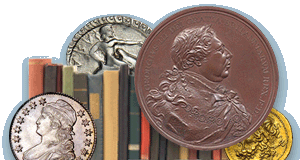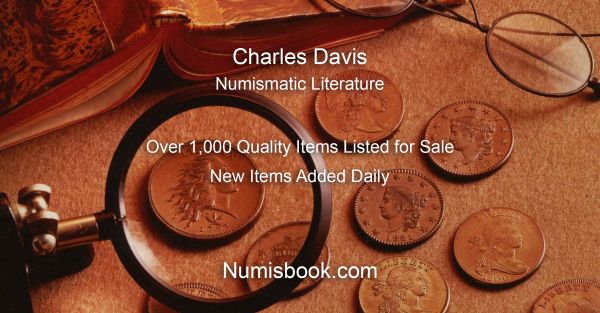
PREV ARTICLE
NEXT ARTICLE
FULL ISSUE
PREV FULL ISSUE
PERIODICAL: THIRD SIDE OF THE COINMarg is an Indian publication founded in 1946 as a forum for pioneering research in Indian art. The latest issue, edited by Joe Cribb, focuses on the non-monetary use of coins, from jewellery, religious offerings, political messaging to contemporary art. -Editor
CONTENTS
Beyond Trade and Transactions: Coins in Caskets, Sculpture, Epigraphy and Rituals
Roman Coins and Venetian Ducats in India: Repurposed and Reinterpreted
The Life Story of a Necklace of Gold Coins, From Venice to India via Egypt
Portable Shrines: Imagery and Iconography of Hindu Religious Tokens of India
From a Collectors Gallery: Hindu, Sikh and Islamic Coins
Lotus Flowers and Bodhisatvas, Horses and Dragons: Buddhism on Chinese Coin Charms
Sikh Coins and the Gurus
Bringing Blessings and Good Luck: Coins in Zoroastrian Customs and Culture
Memorials in Miniature: The Exonumia of the Indian National Movement
Here's an excerpt from Joe's Introduction. -Editor
The Third Side of the Coin This third side is alive and well, even as the coins in our pockets and purses gradually disappear. In August last year the Padmanabhaswamy temple in Kerala announced the offer for sale of gold coins, weighing 1, 2, 4 or 8gr, decorated with images of the temple and its god Lord Padmanabhan. These new coins represent a tradition reaching back over two thousand years of Indian history. The temple itself is a living part of that history as in its vaults are preserved many thousands of gold coins given as offerings to the temple over many centuries. The creation of sacred coins by the temple and its long tradition of receiving gold coins as acts of worship by the temple's devotees illustrate well the Indian tradition of removing coins from their economic function to become symbols of religious devotion.
The origins of the religious power of money and coins Coins were first issued in northern India to make payments by at least the 4th century BC, silver karshapana (punch-marked coins) replacing the earlier use of gold. Their efficiency caused them to spread to all levels of society and to the rest of India and the surrounding countries by the end of the 1 st century BC. Because of their religious designs and integral value, coins became a firm part of Indian culture, quickly entering spheres other than simple payment. Like the gold described in the ancient texts, they were used to make religious offerings, royal gifts and as personal ornaments and have continued to do so for over two thousand years. The earliest images of coins in Indian art show them being used to make religious offerings. At the Buddhist sites of Bodh Gaya and Bharhut, first century BC reliefs show the Buddha's retreat known as the Jetavana park with its surface covered with coins, because, according to Buddhist legend, the park was acquired by one of the Buddha's followers offering to cover its surface with coins. Another early sculpture from Besnagar shows a sacred tree surrounded by offerings, including pots full of coins. The offering of coins in this way is also recorded in the Buddhist Hatthi Pala Jataka (509.474), which describes a king offering a thousand coins every year to the deity residing in a banyan tree in the hope of having a son. As the vaults of the Padmanabhaswamy temple show the tradition of offering gold coins to the gods continues to the present day. Another Buddhist story, the Maha-Ummagga Jataka (546.346–7) provides evidence of the use of coins as personal ornaments, describing how a king drilled a hole in a coin and put it on a string to hang around the neck of a chameleon. Many ancient Indian coins, particularly silver coins from western India and imported Roman gold and silver coins, are found with such holes (often in pairs, so that the coin lies flat). In other cases mounts were soldered onto the edge of the coin so they could be worn in necklaces. This practice was more prevalent in northern India where Kushan and Gupta gold coins were treated in this way. The ornamental use of coins could also be part of the ritual of making offerings, as described in the Linga Purana (38.1–5), which specifies that cows being offered to Shiva should have gold coins hanging around their necks. Joe adds: "The Magazine is brimming over with colour images of coins, coin-like religious and good luck charms, coin jewellery and modern coin art."
For more information, or to order, see:
THE BOOK BAZARREWayne Homren, Editor The Numismatic Bibliomania Society is a non-profit organization promoting numismatic literature. See our web site at coinbooks.org. To submit items for publication in The E-Sylum, write to the Editor at this address: whomren@gmail.com To subscribe go to: Subscribe All Rights Reserved. NBS Home Page Contact the NBS webmaster 
|





